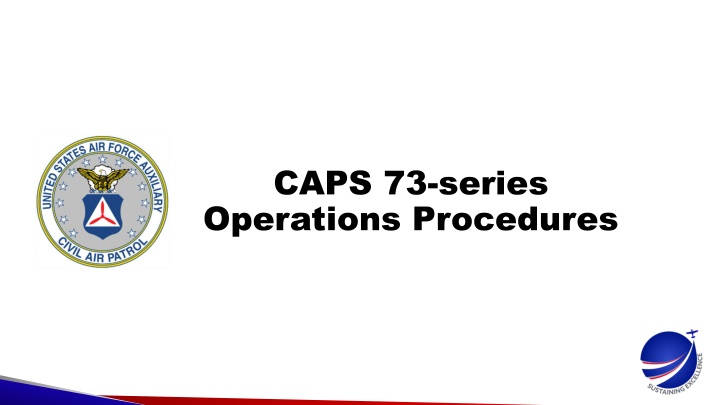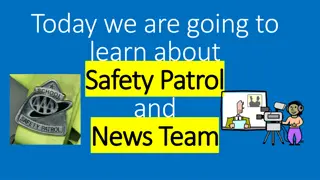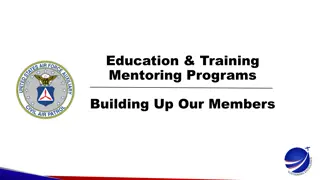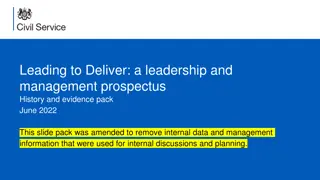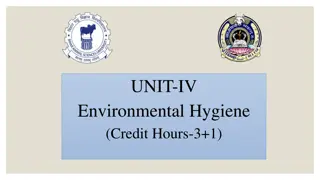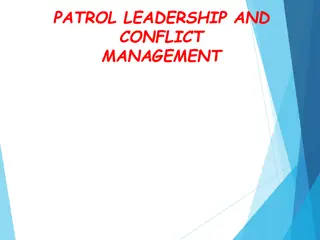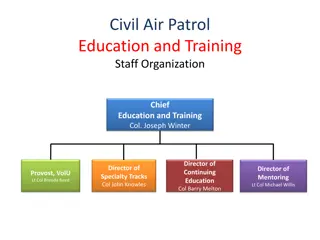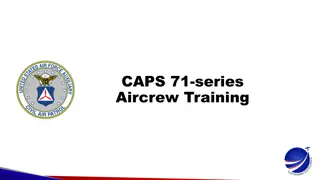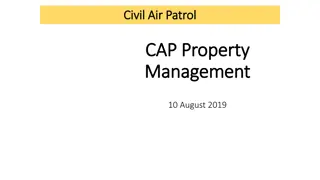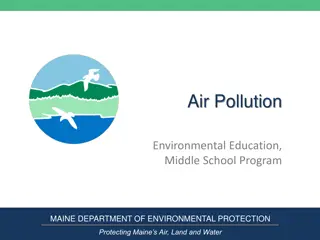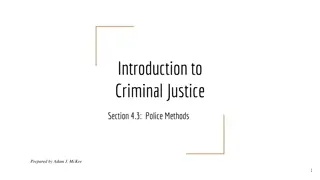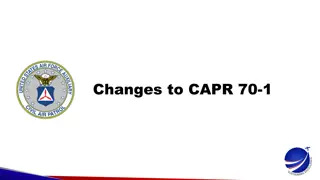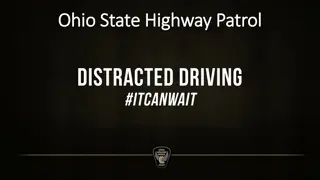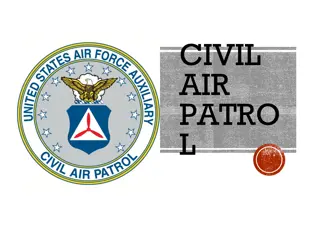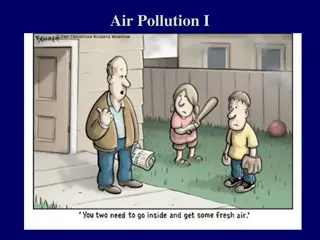Civil Air Patrol Operations Procedures and Philosophy
Explore the comprehensive operations procedures and philosophy of the Civil Air Patrol (CAP), emphasizing the importance of professionalism, teamwork, and adherence to standards. Learn about the core procedures, mission planning, briefing, risk assessment, and the ultimate responsibility of the pilot in command. CAP's approach aims for compatibility, safety, and quality in all operations, with a focus on explicit knowledge sharing and training. Deviations from standard procedures are allowed when necessary, provided they are pre-briefed or communicated. Discover the CAP way of excelling in service to the nation and its members.
Download Presentation

Please find below an Image/Link to download the presentation.
The content on the website is provided AS IS for your information and personal use only. It may not be sold, licensed, or shared on other websites without obtaining consent from the author.If you encounter any issues during the download, it is possible that the publisher has removed the file from their server.
You are allowed to download the files provided on this website for personal or commercial use, subject to the condition that they are used lawfully. All files are the property of their respective owners.
The content on the website is provided AS IS for your information and personal use only. It may not be sold, licensed, or shared on other websites without obtaining consent from the author.
E N D
Presentation Transcript
CAPS 73-series Operations Procedures
Sources of Change Aircrew Professionalism Cross-Functional Team Glider Program Cross-Functional Team CAP-USAF AFAM Status Requirements CAP Publications Proof-of-Concept Comments and recommendations from the field ONE CIVIL AIR PATROL | EXCELLING IN SERVICE TO OUR NATION AND OUR MEMBERS
Publications Architecture CAPS 73-series 73-1 Operations Procedures, Airplane 73-2 Operations Procedures, Glider 73-3 Operations Procedures, Balloon CAPR 70-1 CAPS 71-series Training CAPS 72-series Standards CAPS 73-series Procedures CAP Publications Proof-of-Concept ONE CIVIL AIR PATROL | EXCELLING IN SERVICE TO OUR NATION AND OUR MEMBERS
Why Operations Procedures? Compatibility, interoperability, safety, repeatability & quality Make knowledge explicit for review/use by all (IMPROVE) The CAP way for training Alternative path for risk mitigation, in lieu of Additional regulations Additional checklist steps Additional training requirements Above the water (20%) Belongs to everyone Explicit Below the water (80%) Person-to-person Not persistent Cannot be socialized Not subject to review Tacit ONE CIVIL AIR PATROL | EXCELLING IN SERVICE TO OUR NATION AND OUR MEMBERS
Philosophy A default CAP standard Not a substitute for sound judgment or common sense Deviations are authorized when necessary Deviation pre-briefed or communicated (time critical) AS ALWAYS, the pilot in command (PIC) has the ultimate responsibility for the safe operation of the aircraft. If you have a better standard, let us know: dov@capnhq.gov ONE CIVIL AIR PATROL | EXCELLING IN SERVICE TO OUR NATION AND OUR MEMBERS
Core Procedures Mission Planning and Briefing Briefing and debriefing Pre-flight risk assessment Mission Execution Preflight role of the AIF Sterile cockpit Transfer of aircraft controls Use of checklists and callouts Post-flight and debrief Brief/Post-flight Checklists ONE CIVIL AIR PATROL | Excelling in Service to Our Nation and Our Members
Category-specific Items Airplane Calculation of TOLD and W&B Operations under Basic Med Departure and arrival briefings Automatic Flight Control System Coupled Go-Arounds Go-Around Decision Making Short-field procedures Glider Program Risk Management Required risk controls Staffing Daily risk assessment & awareness Non-participants Initial solo-flight Risk Control Implementation ONE CIVIL AIR PATROL | Excelling in Service to Our Nation and Our Members
Questions & Answers Please go to gocivilairpatrol.com > Programs > Emergency Services > Aircraft Operations > Change Communications
